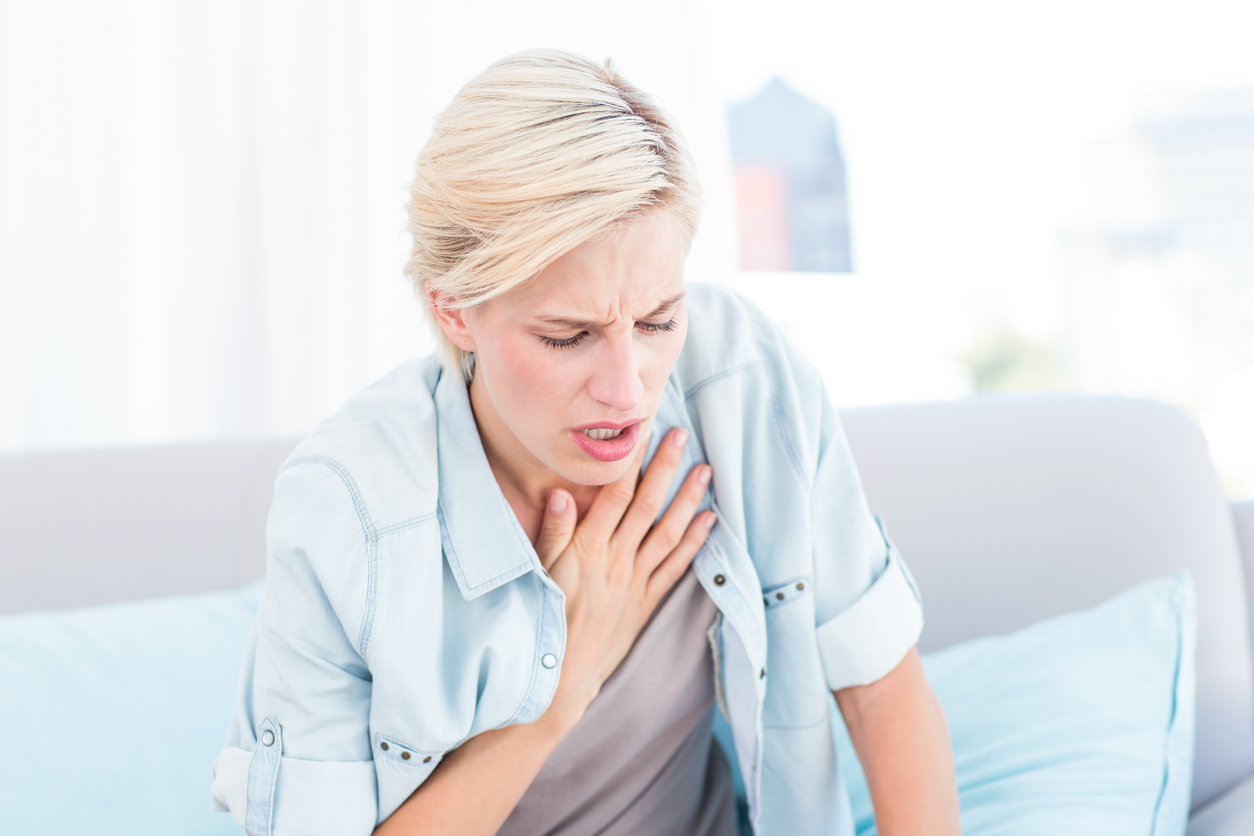If you have asthma, you most likely rely on medication and inhalers to manage your symptoms in case of an attack. Although you know to always keep your inhaler with you in case of emergency, there may be times when you do not have immediate access to it or it is not within reach. This can be very distressing – however, there are some things you can do to alleviate your symptoms until you can access an inhaler once again.
For asthma treatment in Queens and for any questions regarding pulmonary problems, contact Dr. Mayank Shukla.
What is Asthma?
Asthma is a respiratory condition in which your airways narrow, swell, and produce excess mucus. This makes breathing difficult and triggers coughing, wheezing, and shortness of breath.
What are some Common Asthma Triggers?
According to the University of Maryland Medical Center, some of the most common asthma triggers include:
- Dust, cockroach waste, pet dander, indoor and outdoor mold, and pollen.
- Air pollutants, such as smoke, perfumes, diesel particles, sulfur dioxide, high ozone levels, and fumes from paint, cleaning products, and gas stoves.
- Changes in the weather, especially in temperature (particularly cold) and humidity.
- Tobacco smoke.
- Aspirin and non-steroidal anti-inflammatory drugs (NSAIDs) can trigger asthma in up to 5% of adult asthma patients.
- Activities that affect breathing, such as exercising, laughing, crying, or yelling
- Stress and anxiety
Need for Emergency Care
There are ways to manage mild-to-moderate asthma symptoms without an inhaler. However, if you experience any of the following conditions, seek emergency medical care immediately.
- Extreme difficulty breathing or stopping breathing
- Bluish color to the lips and face, called cyanosis
- Severe anxiety
- Rapid pulse
- Excessive sweating
- Decreased level of consciousness, such as drowsiness or confusion
To all kinds of asthma attacks, seek out asthma treatment in Queens with Dr. Shukla.
8 Ways You Can Survive an Asthma Attack Without an Inhaler
1. Sit Upright
Hunching over or lying down constricts your lungs and limits the amount of air able to pass through. Sit upwards with your back straight to keep your lungs wide open and allow in the maximum amount of air.
2. Practice Deep Breathing
Deep breaths will help control your heart rate and loosen tension in your chest. Sit upright and take belly breaths in through the nose and out through the mouth.
Other recommended breathing techniques you may be interested in teaching yourself (they take a few days to a couple of weeks to learn) are:
- Buteyko technique
- Papworth method
- Pranayama yoga breathing
*If you have a peak flow meter (which measures how much air your expel from your lungs,) use it. If you are less than 25% off your normal mark, proceed with the following steps. If more, go to the emergency room immediately.
3. Be Calm
Emotional stress is a trigger – it can create or worsen asthma attacks. Breathe, meditate, or use visualization techniques to help remain calm – and quiet. Talking and noise can worsen symptoms, too.
4. Eat the Right Foods
- Magnesium has bronchodilating and anti-inflammatory effects and is especially good for children with asthma.
o Magnesium is found in foods including almonds, spinach, dark chocolate, and tofu.
- The British Medical Journal cites evidence that vitamin C can reduce exercise induced bronchoconstriction by 48%, in some cases.
o Some foods high in vitamin C are oranges, strawberries, papaya, broccoli, bell peppers, and kale.
- Eating fish or taking a fish oil supplement is also a great idea, because these foods have a strong anti-inflammatory effect.
5. Know Your Triggers and Get Away/Stay Away from Them
Get Away: In case of an attack, ease symptoms by getting as far away as possible from what’s triggering you. Don’t be afraid to ask for help if you can’t get there on your own.
Stay Away: Avoid triggers by:
- Quitting smoking or staying away from smokers
- Finding out what you are allergic to and avoiding it
- Warming up slowly before exercise
- Avoiding emotional stress by learning relaxation techniques
See Dr. Mayank Shukla for asthma treatment in Queens to find out what your triggers are.
6. Drink Coffee or Tea
Caffeine appears to improve the airway’s function, modestly, for up to four hours in people with asthma.
*Warning: caffeine will also speed up your heart rate, so limit yourself to 1-2 cups to avoid hyperventilation.
7. Take a Steam Bath
It is never a good idea to take a shower while you are having an asthma attack but sitting in the bathroom while running hot water in the shower to fill the room with steam can ease your symptoms by gently loosening mucus.
(Using a humidifier in your everyday life is a terrific way to prevent an attack caused by dry air.)
8. Have an EpiPen On Hand
You may think it’s just for allergic reactions, but it works for asthma attacks without an inhaler too. If all else fails, it could be a lifesaver.
Bonus: Keep Company
Your asthma symptoms can go from managed to life threatening before you know it. Try not to be alone during an attack in case of hyperventilation or fainting. If you are alone, call or text a friend or family member to let them know about your situation. Having someone you know with you can also be very comforting and ease anxiety and emotional reactivity.
Never use these suggestions as an alternative to prescription medicines.
Asthma Doctor in New York
The best time to manage an asthma attack is before you ever have one! That is why you should see Dr. Mayank Shukla for asthma treatment in Queens. Dr. Shukla will diagnose, treat, and help manage your asthma symptoms. He works with children as well as adults. If you need asthma care, contact Dr. Shukla today!

